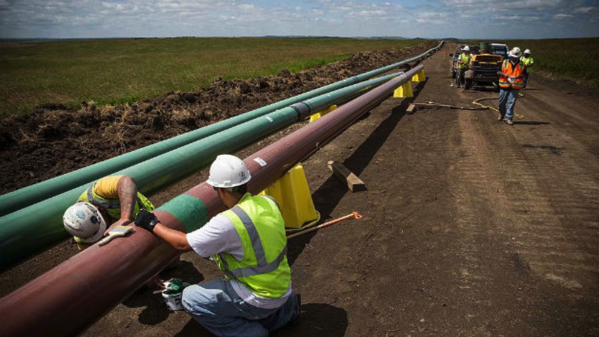
If the United States is to become more energy independent, some say, then it is imperative that additional oil and gas pipeline infrastructure is built. And that includes the Keystone XL and the Dakota Access Pipelines, which is why President Donald Trump has signed executive orders to allow permitting to be streamlined.
But the key question is whether presidential support can overcome the economics of the Keystone project, as well as the fierce environmental opposition to it and the Dakota line. While the president has the power the microphone, he does not have the power of a monarch. The lines still need the approval of the states they’ll operate in.
Both pipelines have become political symbols, with Keystone turning into the dividing line between climate activists and those who just wanted to send Canadian tar sands into the Lower 48 through the pipelines instead of by rail car. Opponents cite the danger to water quality and the rights of Native Americans, and have branded the battles as the people versus Big Oil: TransCanda Corp. and Energy Transfer Partners, respectively.
“We will build our own pipeline, we will build our own pipes, like we used to, in the old days,” Trump said, as he signed the orders, insisting that it will be done with U.S. steel and labor.
…
Just how is oil and natural gas transported in this country? Natural gas, of course, moves exclusively by pipeline unless it is liquefied and shipped overseas by tanker. Oil, meantime, uses pipelines 70 percent of the time, river barges 23 percent, trucks 4 percent and railway 3 percent. Of note, analysts say that it can cost as much as five times more to transport oil by rail than it does pipe, for moderate to long distances.
As for Dakota, Energy Partners says that the line would eliminate as many as 740 rail cars and 250 trucks. It also says that the line is 70 miles from the Standing Rock Sioux’s water resources in North Dakota.
Keystone, meanwhile, would deliver 900,000 barrels of crude that would flow from Canada and would help ease imports from more distant sources like the Middle East. And, if TransCanada the architect of the would-be line, were so inclined, it would pipe its fuel westward before having it shipped to Asia. That would create even more emissions than a direct link to the Lower 48.
Via Red Flag News